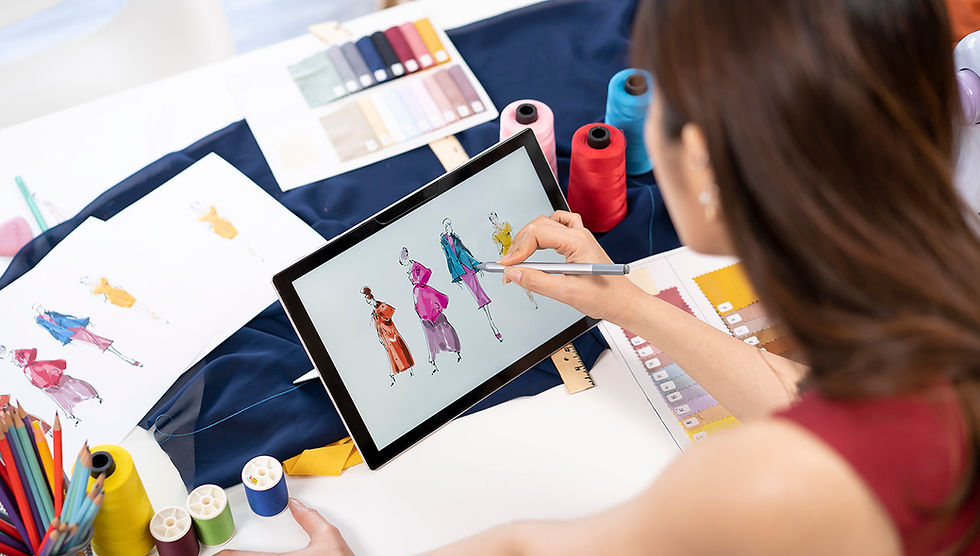INSIDE THE FASHION INDUSTRY - The Role of AI in Solving Fashion Industry Challenges In the Eyes of Investors
- Barbara Sessim

- Jun 12, 2024
- 2 min read

That this industry is innovative we all know! But now, being innovative is not enough, you also need to learn how to apply new technologies and new resources to your creativity. Both Gen Z and AI have proven to us that things CAN indeed change in the fashion industry and consequences will follow for years to come, especially for those not adapting! But, one of the main things that this industry is currently teaching us is that adapting and adopting new resources is not a choice anymore. Especially for new emerging brands looking into secure funding. Investors now see AI as a pivotal tool to solve some of the most significant problems facing the industry. So, in this blog post, let’s explore key challenges that AI is being used to address according to investors.
Problem 1: Inventory Management and Forecasting
One of the most significant challenges in fashion is managing inventory and forecasting demand. Excess inventory leads to markdowns and waste, while insufficient stock results in lost sales. AI-driven solutions are increasingly helping retailers analyze data to better predict trends, allowing them to optimize inventory levels. Companies like Zara and H&M use AI to analyze customer preferences and past sales to make accurate forecasts.
Problem 2: Personalized Customer Experiences
Consumers today expect personalized experiences, but offering them at scale is complex. AI algorithms can process vast amounts of data to deliver personalized recommendations, from clothing styles to accessories. E-commerce platforms like Amazon and ASOS employ AI to recommend products based on customer browsing and purchase history, enhancing the shopping experience and boosting sales.
Problem 3: Reducing Environmental Impact
The fashion industry is a major contributor to environmental pollution. Investors see AI as a solution to reduce this impact by optimizing manufacturing processes and minimizing waste. AI can be used to design clothing patterns that reduce fabric waste and develop more sustainable materials. Companies like Nike and Adidas are investing in AI-driven sustainability initiatives to lower their carbon footprint.
Problem 4: Automating Design and Production
AI is revolutionizing the design and production processes in the fashion industry. Automated design tools can create new patterns and styles quickly, while AI-powered robots streamline production. This automation reduces costs, speeds up production, and allows for greater flexibility in responding to trends. Fashion brands like Adidas are using AI-powered robots to automate their production lines, resulting in quicker turnaround times and reduced costs.
PS: I have written two full blogs about this. Check it out:
Problem 5: Enhancing Supply Chain Efficiency
Fashion supply chains are complex, with multiple stages from raw materials to finished products. AI can enhance efficiency by improving tracking and logistics. AI-driven solutions can optimize shipping routes, predict supply chain disruptions, and even track products through the supply chain. Companies like Levi's use AI to monitor their supply chains, ensuring products reach customers efficiently and on time.







Comments